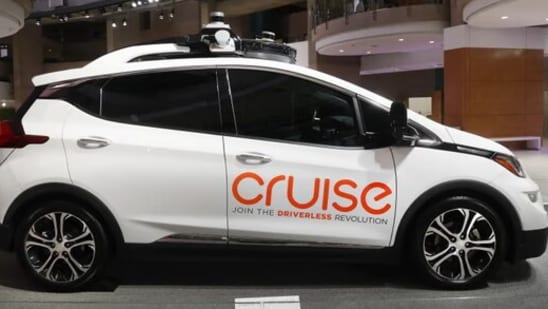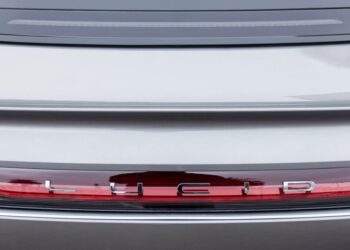AUTONOMOUS TAXIS are taking over San Francisco. Although Waymo, the world’s most famous robotaxi company, only launched there in 2023, it may now have more than a fifth of the city’s ride-share market (which includes Uber, but not traditional cabs). Wherever you look one of the company’s white Jaguars whooshes past. Tesla’s robotaxis have joined them, though with a supervisor in the driver’s seat. Before long Zoox, a driverless-car firm owned by Amazon, will set taxis free in the city.
PREMIUM Cruise has been operating in parts of San Francisco in autonomous vehicles with a back-up human driver | AP photo
San Francisco’s robotaxi boom raises a question: when technology automates a profession, what happens to human workers? You might think that the city’s drivers are doomed. In fact, so far, the rise of autonomy has played out in two different ways. First, it has raised overall demand for taxis in San Francisco, limiting job losses. Second, it caters to a lucrative corner of the market rather than to the masses.
Take the size of the market first. We find little evidence Waymo has put many humans out of work. According to official data, in 2024 the number of people in San Francisco working for “taxi and limousine service” firms grew by 7%, against a year earlier. Total pay in the industry rose by 14%. Figures from the city suggest the number of old-fashioned taxi trips is about the same as it was last year. It can still be hard to find a yellow cab at peak times. “As self-driving cars enter the marketplace, they will actually expand the market,” David Risher, chief executive of Lyft, a human-powered ride-hailing firm, recently suggested.
The extra riders come from different places. Waymo claims that some people visit San Francisco in order to ride their taxi, which would represent pure additional demand. More likely is that residents are using private cars less often. When the alternative was a Lyft or an Uber, people may have preferred to drive themselves. The risk of having to listen to bad music or engage in awkward conversation was too great. In a driverless taxi you can sit in silence. There are signs that San Franciscans are changing their behaviour. Spending on taxis appears to be growing especially quickly compared with that of residents of other cities. And since Waymo’s launch the number of private cars, adjusted for population, has fallen.
Autonomous taxis are nonetheless a long way from being a mass-market product. Waymos are comfortable and generally clean. But they are perhaps 20-40% more expensive than a Lyft or an Uber. They are also slow. Unlike human-piloted taxis, autonomous ones rarely break traffic rules; you cannot tell a robot to “step on it!” They also get confused and stop in the middle of the street. Human drivers in San Francisco now know that if they bully a robotaxi it will give way, which means that Waymos are often the slowest to move.
Over time, robotaxi companies may iron out some of these flaws, by, for instance, cutting prices. But do not expect autonomous taxis to dominate the market soon, in San Francisco or elsewhere. If you have time, by all means sit in a robotaxi. If you need to get somewhere fast, there is nothing better than a yellow cab.

All Access.
One Subscription.
Get 360° coverage—from daily headlines
to 100 year archives.
 E-Paper
E-Paper  Full Archives
Full Archives  Full Access to
Full Access to
HT App & Website  Games Subscribe Now Already subscribed? Login
Games Subscribe Now Already subscribed? Login
Copyright for syndicated content belongs to the linked Source link







